Wildcat Cartridges
6.5 JDJ
column By: Layne Simpson | April, 22
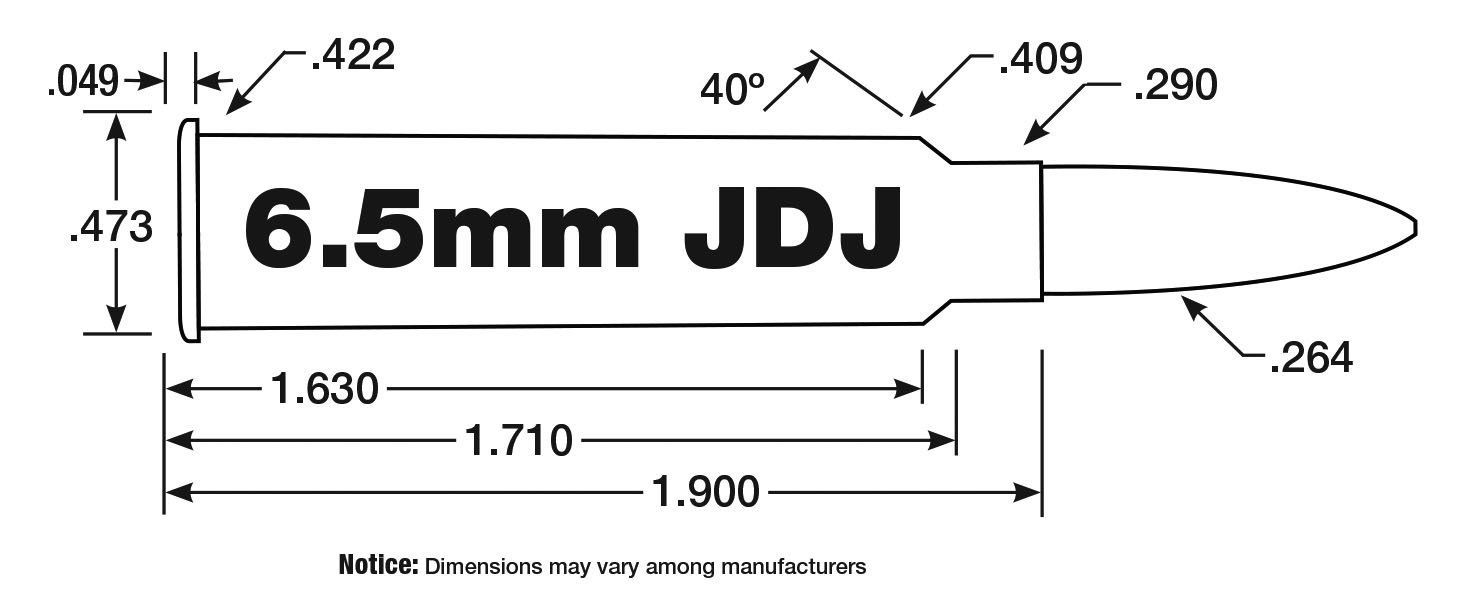
Perhaps the most unusual of J.D.’s creations is the .338 Woodswalker. Made by necking up the European 8.15x46R case and fireforming, it pushes 200-grain, .338-inch bullets from a 10-inch barrel at close to 2,000 feet per second (fps), or about 10 percent slower than from the 24-inch barrel of a Winchester Model 1886 in .33 Winchester. In my neck of the woods, there has always been an overabundance of feral hogs and they can be legally hunted day and night, year-round. When doing our best to thin the population during daylight hours, a friend and I used a trio of well-trained Plott hounds to chase down the bacon. Since shots at bayed pigs were inside 10 short paces, we carried a variety of percussion and cartridge revolvers. On several occasions, I found my short-barreled, open-sighted Contender in .338 Woodswalker to be quite effective at a very comfortable level of recoil.
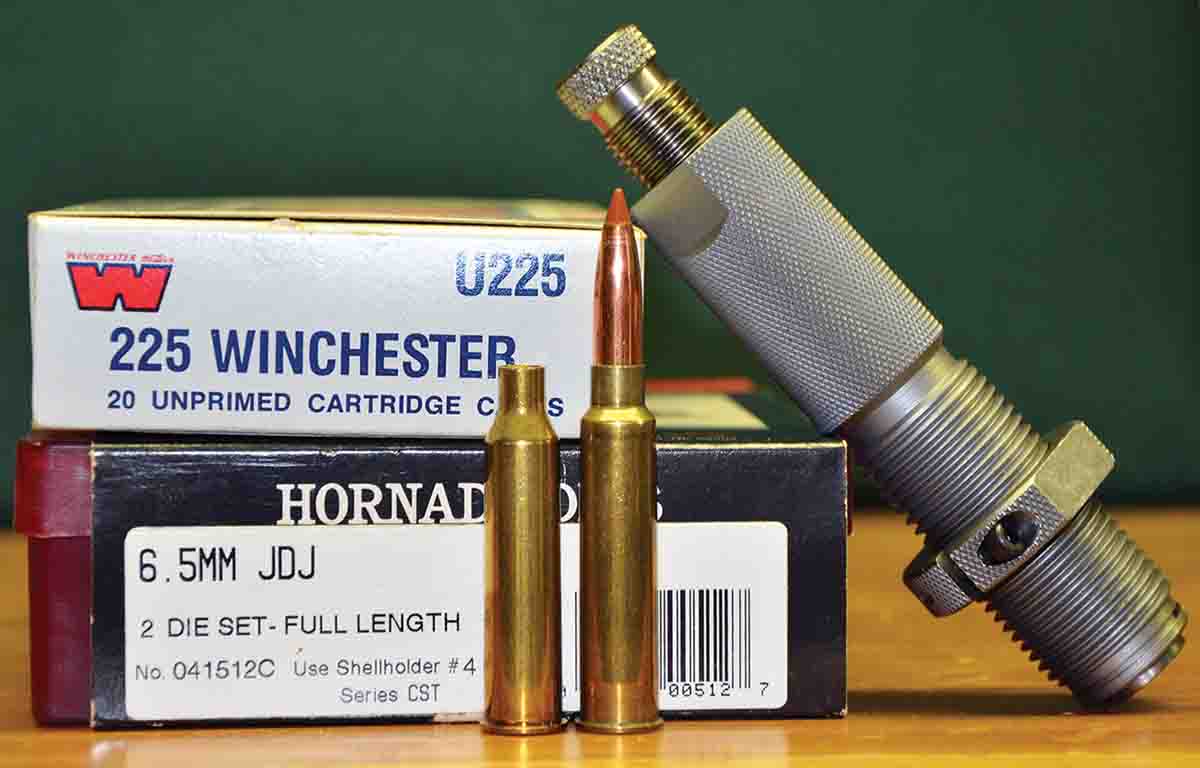
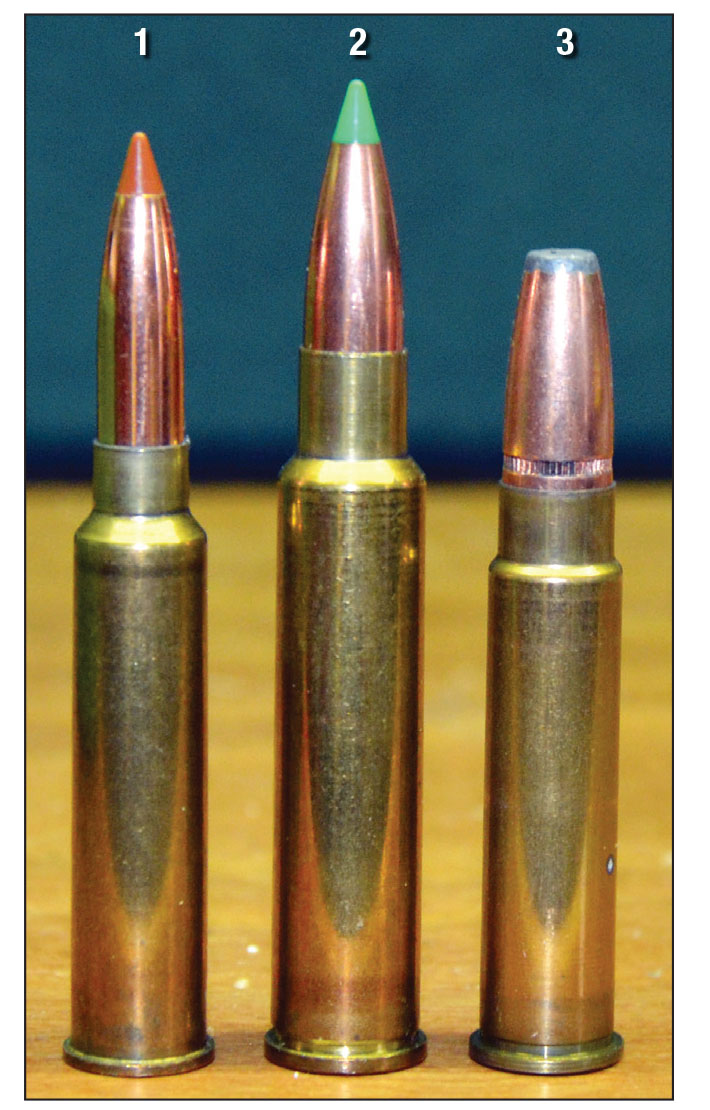
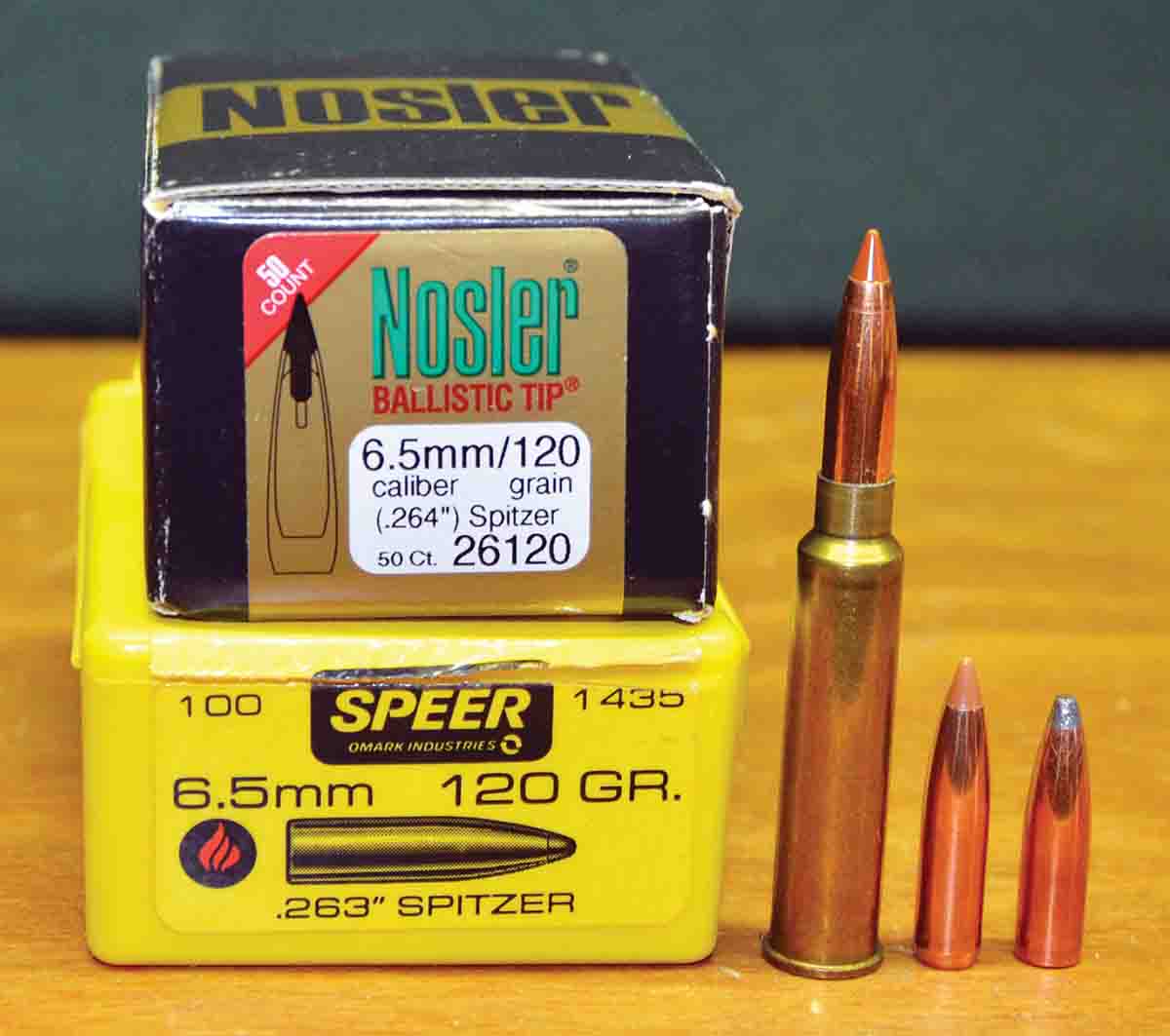
How good is .225 Winchester brass? Forty 6.5 JDJ cases sitting on a shelf in my gun room were formed around 1995 and with nothing more than neck-annealing after each four firings and the occasional neck trim, they are still going strong. That’s a good thing because Winchester has not produced .225 cases in a very long time and has no plan to do so anytime soon. Quality Cartridge catalogs the brass, but with the great demand for other more popular cases, the production of .225s is low on the priority list. While my first 40 formed cases are still good, I reserve them for punching paper and use cases fired no more than a couple of times when hunting.
The 14-inch barrel on my SSK Contender is a match-grade, stainless steel Shilen with a 1:8 twist. An extremely long chamber throat allows all bullets up to those weighing 129 grains to be seated with little to no intrusion into the powder cavity of the case. Depending on the hunt, it has worn two different Burris long-eye-relief scopes. Due to a fairly wide field of view, the 1.5-4x version is better for close shots while its upper magnification is plenty for the longest shots game is usually taken with the Contender handgun. Even so, when longer shots are anticipated, a 2.5-7x Burris is often used. With the barrel fitted with a Burris 10x IER varmint scope and using one of the gun’s favorite loads, it often keeps five Hornady 95-grain V-MAX, Nosler 100-grain Ballistic Tip and Nosler 120-grain Ballistic Tip bullets inside 4 inches at 300 yards from a sandbag rest.
One of the longest shots at game I have taken with the little cartridge was on a pronghorn buck at 316 yards. The Nosler 120-grain Ballistic Tip at 2,375 fps was zeroed 3 inches high at 100 yards. Holding for 10 inches of drop below point of aim and about 12 inches into a side breeze resulted in a quick kill on one of the best bucks I have taken through the years. When shot, the animal was standing in a slight quartering-away position and the bullet ended up in the offside shoulder. Despite an impact velocity of only 1,850 fps or so, bullet expansion was quite good. That same load has worked equally well on whitetail deer and feral hogs.
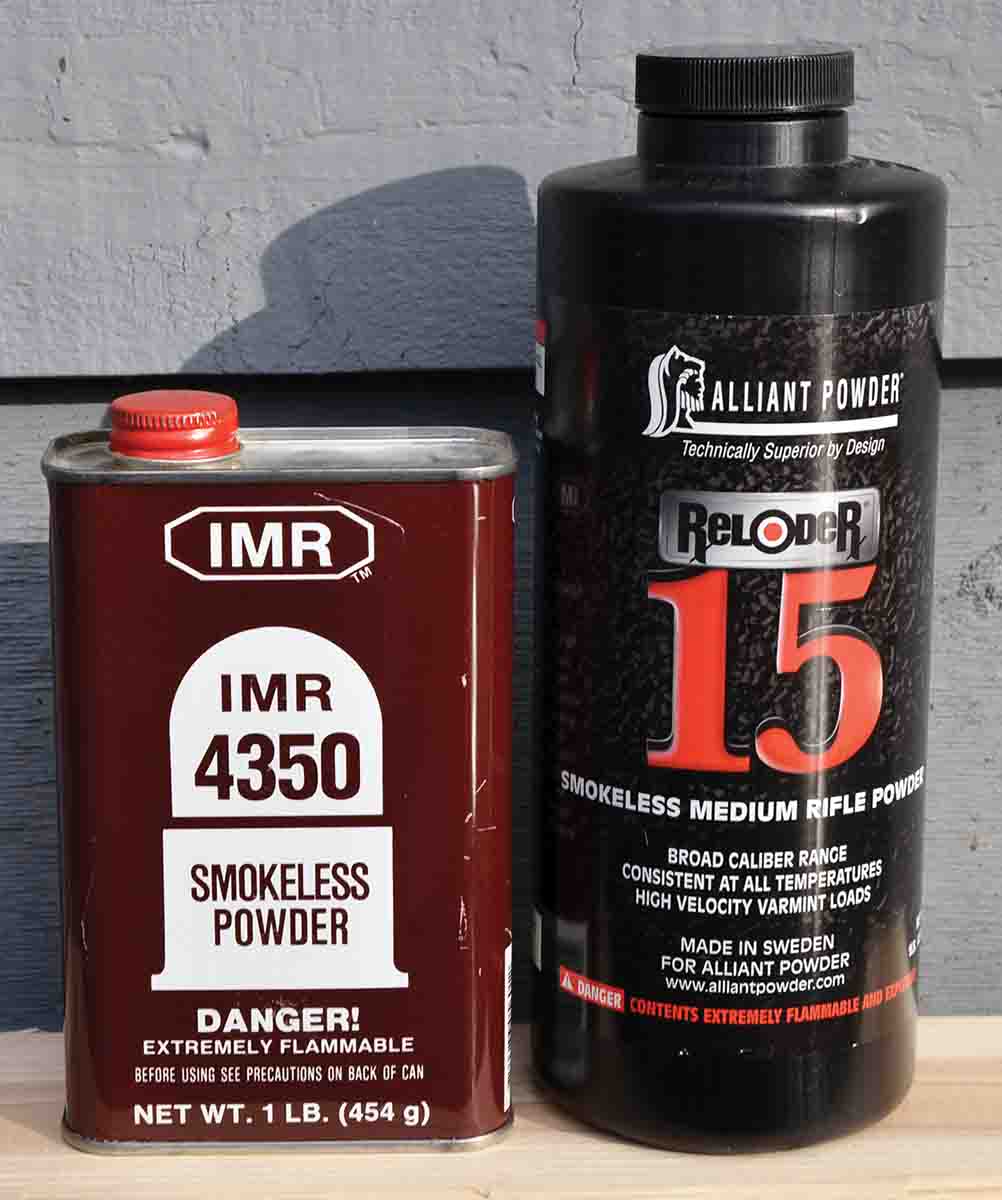
Next, wipe all lubricant from the full-length resized case, insert the case into the chamber, close the Contender with a snap of the wrists, cock the hammer and pull the trigger. If the shoulder of the case has been bumped back enough, the hammer will strike the firing pin when the trigger is pulled. If the gun locks up but the hammer does not strike the firing pin, turn in the die about 1⁄8 revolution and resize the case again. At this point, the case should allow the gun to fully lockup. If not, repeat until it does, then lock the die in position and resize the rest of the cases. If those cases will be used on a hunt, I keep one step ahead of that “Murphy guy” by inserting each into the chamber, closing the gun, cocking the hammer and pulling the trigger to make sure the hammer does, in fact, whack the firing pin. All cases are then ready for priming and loading.
Seating out bullets a bit too far can also cause a Contender to appear to be locked up, but unable to fire. To determine the maximum a particular bullet can be seated out of the case, begin by seating it in a properly resized empty case at an overall length that won’t allow the Contender to fully close. Then, gradually seat the bullet deeper into the case until the gun will close, lockup and allow the hammer to strike the firing pin when the trigger is pulled. Finally, check to see if the bullet is making contact with the rifling leade of the barrel by smoking the bullet of the dummy round, dropping it into the chamber and closing the gun. If rifling marks appear on the bullet, it should be seated a bit more deeply into the case.
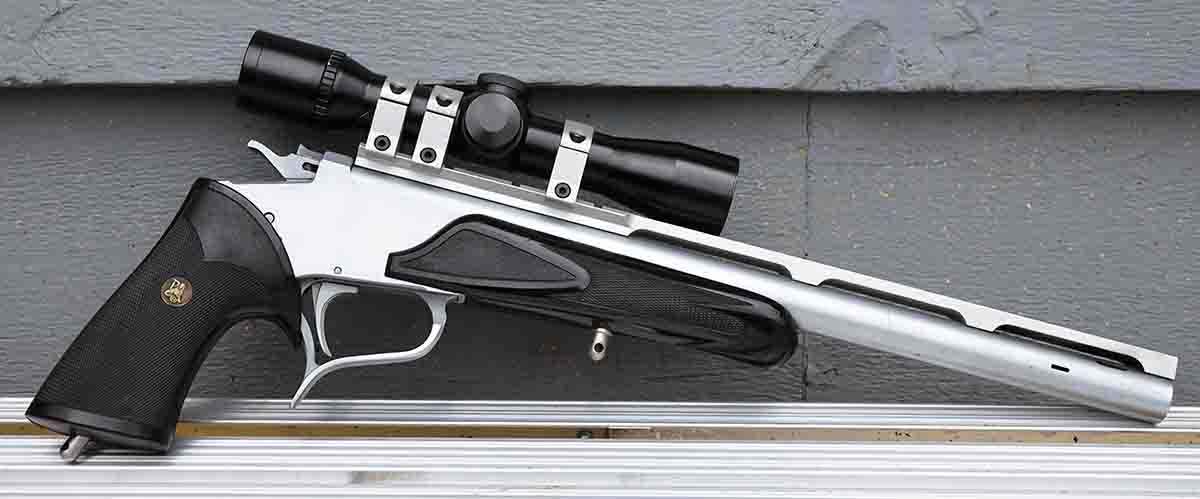
As illustrated in Western Powders Handloading Guide Edition 1 and Hornady Handbook of Cartridge Reloading 9th Edition, several powders work nicely in the 6.5 JDJ. For many years, the most popular load used by hunters, and the one most often recommended by J.D. Jones, was 38 to 38.5 grains of IMR-4350 and the Speer 120-grain pointed softpoint. That powder and Reloder 15 continue to be my favorites. The 120-grain Speer was discontinued sometime back and the Nosler Ballistic Tip of the same weight has taken its place. From my gun, the Nosler is more accurate but the Speer was accurate enough and performed about the same on deer and such.


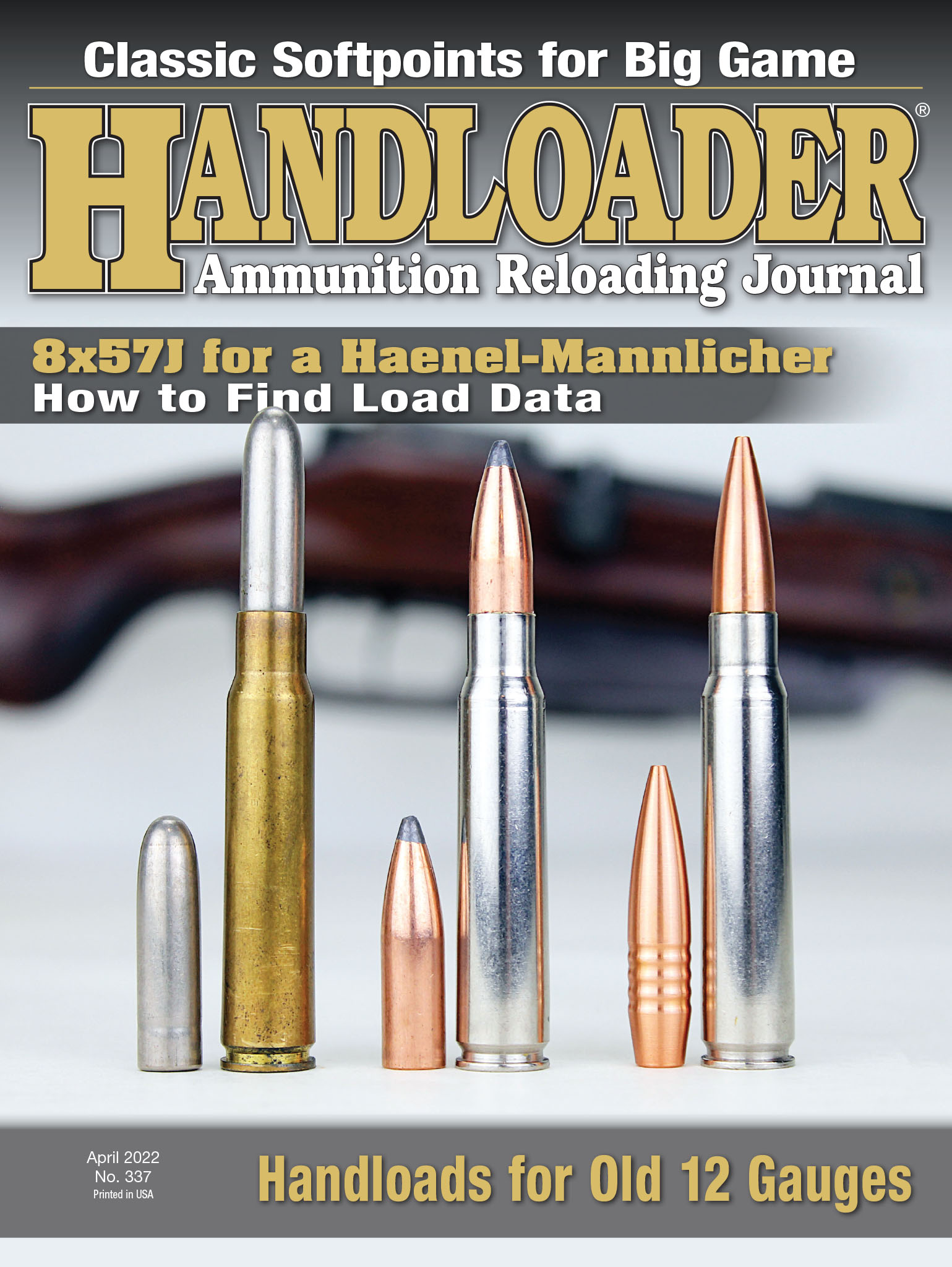
.jpg)